Initiation is a process of imparting knowledge that is intended to bring about a change within the Neophyte.
The Masonic Initiation, according to the Rite of Memphis, has the purpose of teaching the Neophyte to die, by killing his instinctive and selfish being, thus the ceremony has the appearance of a dream, in which ordinary images express transcendent realities.
As it is said that the human spirit can approach the Truth only through legends, myths and symbols, the Masonic Initiation could be considered the equivalent of the “Egyptian Book of the Dead”.
The Book of the Dead is the common name in Ancient Egypt for funerary texts also known as Summoning Spells.
The Book of the Dead is a description of the Egyptian conception of the afterlife, as well as a collection of hymns, spells, and instructions to enable the deceased to pass through the various obstacles to the afterlife.
During the Masonic Initiation, the Neophyte is subjected to four trials that he must pass, corresponding to the four elements – Earth, Water, Air and Fire.
Each episode of the Egyptian Masonic Ritual corresponds to a doubled action in the subtle planes. The Elements are aspects of Divine Consciousness that manifest in all planes of existence.
The Neophyte must subdue his passions or the “the instinctive forces of nature”, in order to become a King of Air, Water, Earth, and Fire or a master of their manifestations as intellect, emotion, thought and passion.
In other words, he banishes his ego and his lusts by confronting the elements which once controlled him.
In this article we will take a look at the particularities of the Initiation Ceremony in the First Degree of the Rite of Memphis and briefly analyse them.
THE TRIAL OF EARTH (THE CHAMBER OF REFLECTION)

The trial of Earth symbolizes the physical death of the candidate and his access to a higher spiritual state that permits him to pass through all the following trials of the Initiation Ceremony.
When the aspirant presents himself for the trials of Initiation, he is confined in the Chamber of Reflection, where he is left to meditate and reflect upon the symbols that can be found there.
Upon entering this room, the candidate must give up all the “metals” (belongings): he must cease to put his trust in the purely external values of the world, in order to be able to realize and find within himself the true values, of moral and spiritual nature.
It does not mean that one must strip away everything that belongs to him and has been acquired as a result of his efforts, but only that he must stop giving a primary importance to the belongings, because they can make him their slave or servant.

Chamber of Reflection
IMAGE LINKED: Author’s own image
This room is painted entirely in black and has a funereal and dark aspect. The only source of light is a lighted candle. Its decoration reminds of the end of all things, the fragility of human life and the vanity of earthly ambitions.
In this obscure setting, the candidate is asked to write a philosophical testament, that is, to reflect on some existential questions found on a table.
On the table, there are three small containers containing Sulphur, Mercury, and Salt, the three alchemical principles.
Apart from these, on the table there are also: a human skull, reminding of the vanity of pleasures, riches, power and the ephemerality of life, the bread and water offered to travellers, emblems of the simplicity that must guide the life of the future Initiate, a lighted and half consumed candle, a white sheet of paper and a writing instrument.

Chamber of Reflection
IMAGE LINKED: Author’s own image
On the East wall there is a painting, representing a rooster, an allusion to the awakening of dormant forces. It announces the end of the night and the triumph of Light over darkness.

Chamber of Reflection
IMAGE LINKED: Author’s own image
On the West wall, there is a drawing representing the shape of a coffin, in the middle of which is depicted a Pentagram with an Ankh Cross in the centre. This is the representation of the Initiate, restored to the Spiritual Life after having died in the apparent life of the material world.

Chamber of Reflection
IMAGE LINKED: Author’s own image
Above the painting is written “V.I.T.R.I.O.L.”, an alchemical acronym that invites the candidate on a journey into the depths of his self:
“Visita Interiora Terrae Rectificando Invenies Occultum Lapidem”: Visit the Innermost of the Earth and by Rectifying you will find the Hidden Stone.
Other maxims of the Rite that are written on the walls are:
∴ “If I am truly reborn, Osiris will be reborn through me!”
∴ “If you care about human distinctions, Go! We, here, do not know them!”
∴ “If curiosity brought you here, Leave!”
∴ “If you persevere you will be purified by the Elements, you will come out of the abyss of darkness, you will see the Light!”
The symbolism of this Chamber, as well as that of the Apprentice Degree, refers to the first phase of the Great Alchemical Work: NIGREDO or Putrefaction.
Nigredo signifies the difficulties which the Neophyte must overcome in his journey through the Underworld, culminating in the realization of his Self.
The Neophyte is prepared with a blue cord around the neck, which represents the fluid connection that connects for a short time the soul with the body it left after the material death.
Leaving the Chamber of Reflection, the Neophyte symbolically crosses, in a state of blindness, the Kingdom of the Dead, the dark Amenti [or Duat] His steps are led by a psychopomp (an entity believed to escort deceased souls to the afterlife, here represented by a Brother) towards the Eternal Light.

Pantheon. The Four Genii of Amenti.
IMAGE LINKED: The New York Public Library Digital Collections. Attribution 4.0 International (CC BY 4.0)
Amenti represented in Egypt the place of the Hidden Sun. The word “Amen” means “the hidden one” and “ta” means realm. Amenta or Amenti is the place of the spirits of the dead.
The element Earth corresponds to North. North is associated with the Nadir path of the Solar Disc, so it is represented by darkness. In the cycle of a day, it is Midnight, and in the cycle of a year it is Winter.
The Midnight Sun is an ancient symbol known to the Egyptians. The sun travelled through the Underworld during the night, through the Realm of the Dead, being transformed and purified by this journey, only to be reborn the next day.
THE POTION OF BITTER MEMORIES
The Neophyte symbolically lives again everything that throughout his life formed the regrettable part of it, with the aim of being purified, in order to no longer be under the dictatorship of the instincts.
Thus, he drinks a potion prepared from certain processed, filtered and sacralised plants, whose bitter taste prompts him to a deep introspection, since he must accept to die in his old life, before being reborn in the Initiatic Life.
The Potion of Bitter Memories is also what creates the connection between the Neophyte and the Egregore of Freemasonry.
The Egregore that animates the Masonic Order penetrates deep into the being of the Neophyte, with the aim of dissolving and transforming his past personality.
THE TRIAL OF WATER

The Neophyte left his body, represented by the skull that was in the Tomb (The Chamber of Reflection).
The First Journey is that of the soul traversing unknown spiritual regions. The journey is strewn with obstacles and frightening noises, like the journey of the soul seeking to free itself from its animal instincts.
Being protected and guided, the Neophyte overcomes the obstacles and reaches the First Gate, and the psychopomp utters the phrase that compels the Archon who guards this Gate to purify him with Water, and then to open it, so that the journey can be continued.
The Water element corresponds to West. In the cycle of a day, it is the Sunset, and in the cycle of a year it is Autumn, the season when the light begins to wane.
West is associated with the beginning of the Solar Disc’s journey into the Underworld, when the shadows lengthen in the light of the setting Sun, and the gate between the Worlds is opened.
THE TRIAL OF AIR

The soul, freed from the material cover and purified by Water, is detached from the passions of the flesh, but remains subject to intellectual convictions.
The strong and intense passions of the spirit are thus removed by the gentle breeze of the Air.
The human soul must not submit to any constraint nor become a slave to any belief or opinion, as none of them come close enough to the Truth.
The Air element corresponds to East. In the cycle of a day, it is Sunrise, and in the cycle of a year it is Spring, the season when light and warmth begin to increase.
The East is associated with the rebirth of the Solar Disc after it has been purified in the Underworld.
THE TRIAL OF FIRE

Water can only purify the material body, and Air can only purify the Double, mediator between the body and the spirit.
The purification of the last residue of the human being, the Soul, can only be done through Fire, a superior and occult element.
The Neophyte passes through the Gate of Flames, no obstacle hinders his journey, and nothing disturbs his inner peace. In the spiritual regions he reached, only Beauty, Wisdom, and Harmony reign.
The Fire element corresponds to South. In the cycle of a day, it is Midday, and in the cycle of a year it is Summer, the season when light and heat are at their peak.
South is associated with reaching the highest point in the sky in the journey of the Solar Disc.
THE SEAL AND THE MARK
The Neophyte is marked on the left arm with a fire-red iron seal, and this is accompanied by a Mystic Pact.
He is to submit to an Esoteric Oath that will have to be signed with his blood, to then be projected by Fire into the Invisible World, at the same time as his philosophical testament.
These trials have become just verbalized in most of the Lodges which work in the symbolic degrees of the Rite of Memphis, and where they are still practiced, the seal is substituted by candle wax dripped on the Neophyte’s forearm, and the blood trial consists in pricking the tip of the Index with a sterile needle to draw a drop of blood.
In the Egyptian Book of the Dead the first gods are described as the drops of blood that flowed from Ra’s phallus. Blood is the first incarnation of the Universal fluid force, it is the materialized vital light, the great arcana of life.
This trial also has the role of testing the courage of the Neophyte and refers to the Ancient Mysteries, where the candidate had to go through difficult, painful, and even dangerous initiation trials, thus being prepared for the worst that could happen, both in life, as well as after death.
THE POTION OF THE FUTURE
The Potion of Bitter Memories was intended to remind the Neophyte of what needs to be purified and eliminated from his past.
The Potion of the Future embodies the sweetness of Peace and Love that he must seek in Humanity and whose defender he must become.
The drink turned from bitter to sweet represents the transition to the life of the Adept, the perfect Initiate.

Bust of Serapis, Graeco-Egyptian deity. 4th century. Copy of Bryaxis – by Jastrow (2003),
IMAGE LINKED: wikimedia Attribution 4.0 International (CC BY 4.0)
In Ancient Egypt, Serapis was depicted wearing the Gardal or the Divine Cup on his head. In the Gardal were kept the seed of the material fire and that of the heavenly fire of the god Ptah.
THE LIGHT AND THE BURNING OF THE PHILOSOPHICAL TESTAMENT
The band that covers the eyes of the Neophyte and the fluid connection – the cord he wears around his neck are removed.
In order for the Invisible Ether to preserve a trace of the Neophyte’s views on the fundamental and metaphysical matters in his philosophical testament, the testament it is projected through Fire.
To the Ancient Egyptians, the most eminent man was the one who, by hard training, gained the supremacy over the Elements, represented by the Sphinx.

The Sphinx represented the central symbol of Initiation, its four forms corresponding to the four Elements:

Éliphas Lévi, renowned occultist and French Freemason of the 19th century, describes the purification through Elements in his seminal work, “Dogme et Rituel de la Haute Magie” as follows:
You are called to be King of Air, Water, Earth and Fire; but to rule over these four living creatures of symbolism, it is necessary to conquer and chain them.
He who aspires to be a sage and to know the Great Riddle of Nature must be the heir of the Sphinx: the human head, to possess speech; eagle’s wings, to conquer the heights; the flanks of the bull, to plow the deeps; the lion’s claws, to make a way to the right and to the left, forward and backward.
Guided by the intellectual light – concrete knowledge, representing the Initiation Ritual, the Neophyte must reach the spiritual light – abstract knowledge, Gnosis, the true knowledge, which can only be acquired through personal experience.
About the Author

Gabriel Anghelescu is a Romanian Freemason interested in the spiritual and esoteric aspects of the Fraternity.
His passion for esotericism and Freemasonry began at an early age. His first contact with initiatory societies was the International Order of DeMolay, a para-Masonic organization for boys aged 12 to 21. He was initiated in Jacques de Molay Chapter, in Bucharest, where he later served a mandate as the Master Councillor of his Chapter.
He received the Masonic initiation in a French Rite Lodge bearing the distinctive name of Apolodor din Damasc (Apollodorus of Damascus), working under the Grand Orient of Romania and years later he joined L’Athénée des Etrangers Lodge, which works under the auspices of the United Europe Regular Grand Lodge (Marea Lojă Regulară Europa Unită), in the Orient of Bucharest.
He is now the Grand Spokesman of the United Europe Regular Grand Lodge (Romania), a Past Master of L’Athénée des Etrangers Lodge and a member of the Ancient and Primitive Rite of Memphis 1815 (Romania).


Dogme et Rituel de la Haute Magie: (œuvre complète vol.1 & vol.2)
By: Eliphas Levi
French Edition
Existe-t-il une magie, une science occulte qui soit véritablement une puissance et qui opère des prodiges capables de faire concurrence aux miracles des religions autorisées ?
À cette question nous répondrons par un mot et par un livre. Le livre sera la justification du mot, et ce mot le voici: oui, il a existé et il existe encore une magie puissante et réelle; oui, tout ce que les légendes en ont dit était vrai, voire même au-dessous de la vérité.
Il existe un secret formidable, dont la révélation a déjà renversé un monde; une science qui confère a l’homme des prérogatives en apparence surhumaines. Ce secret constitue la science fatale du bien et du mal. Il existe un dogme unique, universel, impérissable, fort comme la raison suprême, simple comme tout ce qui est grand, intelligible comme tout ce qui est universellement et absolument vrai, et ce dogme a été le père de tous les autres.
Et ce livre est le Dogme et Rituel de la Haute Magie.

The Doctrine and Ritual of High Magic
By: Eliphas Lévi (Author), John Michael Greer (Translator)
Filling a huge gap in our spiritual culture, here–at last–is a comprehensive and elegant translation of the 1854 French masterwork of occult philosophy.
The Doctrine and Ritual of High Magic reignited the esoteric spiritual search in the West and led to the emergence of Madame Blavatsky, Manly P. Hall, and the New Age revolution.
Lévi’s study of magic is an absolute must for every seeker in occult, esoteric, and druidic realms; but this need has been frustrated by dated and inaccurate translations–until now. Greer, a respected occult scholar, and Mikituk, a masterful translator, collaborate to restore this landmark work–complete with its original illustrations and symbols–to the center of the alternative spiritual canon.

The Egyptian Book of the Dead:
By: Dr. Raymond Faulkner (Translator), Ogden Goelet (Translator)
For the first time in 3,300 years, The Egyptian Book of the Dead: The Book of Going Forth by Day: The Papyrus of Ani is showcased in its entirety in seventy four magnificent color pages.
Maybe the most stunning presentation of this book in 3300 years: Upon death, it was the practice for some Egyptians to produce a papyrus manuscript called the Book of Going Forth by Day or the Book of the Dead. A Book of the Dead included declarations and spells to help the deceased in the afterlife.
The Papyrus of Ani is the manuscript compiled for Ani, the royal scribe of Thebes. Written and illustrated almost 3,300 years ago, The Papyrus of Ani is a papyrus manuscript with cursive hieroglyphs and color illustrations. It is the most beautiful, best preserved, and complete example of ancient Egyptian philosophical and religious thought known to exist.
The Egyptian Book of the Dead is an integral part of the world’s spiritual heritage. It is an artistic rendering of the mysteries of life and death. For the first time since its creation, this ancient papyrus is now available in full color with an integrated English translation directly below each image.
This twentieth anniversary edition of The Egyptian Book of the Dead has been revised and expanded to include:
• Significant improvements to the display of the images of the Papyrus.
• A survey of the continuing importance of ancient Egypt in modern culture.
• A detailed history of Egyptian translation and philology since the discovery of the Rosetta Stone in 1799.
• And, a state of the art Annotated Bibliography and Study Guide for Ancient Egyptian studies.
As the third revised edition, the entire corpus of this critical work is given its most accessible and lavish presentation ever.
• Includes a detailed history of Egyptian scholarship, an annotated bibliography and study guide, and several improvements to the color plates.
• Makes an excellent gift for people interested in world history and ancient religions.

The Sanctuary of Memphis or Hermes
By: E. J. Marconis
This scarce antiquarian book is a facsimile reprint of the original. Due to its age, it may contain imperfections such as marks, notations, marginalia and flawed pages. Because we believe this work is culturally important, we have made it available as part of our commitment for protecting, preserving, and promoting the world’s literature in affordable, high quality, modern editions that are true to the original work.
Recent Articles: Freemasonry and Egypt
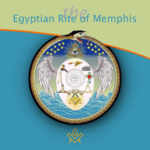 Over time many Masonic Rites have developed, each Rite having its own history, legends, and rituals. Some of them are still practiced today, and others have ceased to exist. The best known and at the same time the most practiced Masonic Rites are the Ancient and Accepted Scottish Rite and the York Rite. Among other Masonic Rites, we can find the Rite of Memphis, to which this article is dedicated. The Rite of Memphis is a branch of Esoteric Freemasonry and specifically one of the Rites of Egyptian Freemasonry. |
 Mason's Marks – from Egypt to Europe? Mason's marks have been a source of intrigue, not only to Freemasons but to historians and archaeologists. The use of simple pictograms have been employed for millennia by artisans to identify their work. But where did they originate and why? |
 Egypt's 'Place of Truth' - The First Operative Stone Masons' Guild? Was ancient Egypt's 'village of the artisans' the first operative stone masons' guild? And was their use of 'identity marks' a forerunner of the Mason's Marks of the cathedral builders of the Middle Ages? Read on for some possible answers… |
 Masonic Miscellanies - Freemasonry & Bees Freemasonry & Bees - what's the buzz? The bee was among the Egyptians the symbol of an obedient people, because, says Horapollo, of all insects, the bee alone had a king. |
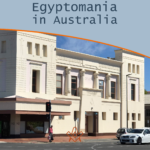 A look at the fascination with Egyptomania and Masonic Temples in Australia |
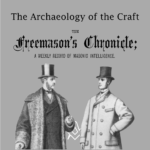 We take a look at the archaeological connection with the Craft, first published in The Freemason's Chronicle - January 30, 1875 |
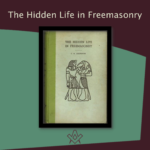 Book Intro - Hidden Life of Freemasonry Introduction to The Hidden Life in Freemasonry (1926) by Charles Webster Leadbeater |
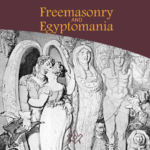 We explore fascinating and somewhat contentious historical interpretations that Freemasonry originated in ancient Egypt. |
 Is Freemasonry esoteric? Yes, no, maybe! |
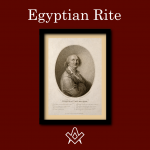 Egyptian Freemasonry, founder Cagliostro was famed throughout eighteenth century Europe for his reputation as a healer and alchemist |
masonic knowledge
to be a better citizen of the world
share the square with two brothers

click image to open email app on mobile device









